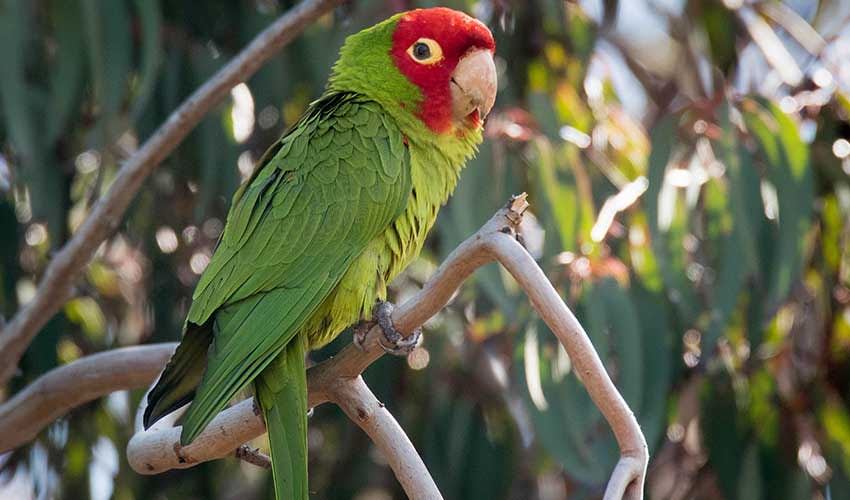Psittacara – Parakeets
Most widespread parakeets in the Americas, living everywhere from the deserts of northern Mexico to the rainforests of Brazil
Native to the Americas, this genus ranges from Mexico and Central America down through much of South America, where its members inhabit forests, savannas, and scrublands. Psittacara parakeets are generally medium-sized, slender-bodied birds with long tails, strong hooked bills, and mostly green plumage that often features splashes of red, yellow, or blue, depending on the species. They are highly social, energetic, and vocal birds, easily recognized by their loud calls that echo across the landscapes they inhabit.
In the wild, they are rarely seen alone; instead, they gather in noisy groups ranging from a handful to hundreds of individuals. Their constant chatter, playful interactions, and synchronized flight make them a lively part of their ecosystems. These parakeets are primarily seed- and fruit-eaters, using their powerful beaks to crack open hard seeds or peel fruits, but they also feed on flowers and buds. Their feeding habits make them important seed dispersers, helping regenerate forests and maintain plant diversity.
Many Psittacara species are still fairly common in parts of their range, but others face pressure from habitat loss and the pet trade. Their bright plumage and playful personalities have made them popular as pets, which has unfortunately led to trapping from wild populations in the past.
These parakeets are exceptional fliers, often moving in fast, coordinated flocks that twist and turn through the air almost like schools of fish. In urban areas, wild flocks have adapted to city life, roosting on telephone wires, feeding on ornamental plants, and even becoming cultural icons—most famously in San Francisco with the Telegraph Hill parrots. They also form lifelong pair bonds, with mates often seen sitting side by side, preening each other affectionately.
Species in this genus
Red-masked parakeet
Best known as the famous “parrot of Telegraph Hill” in San Francisco


